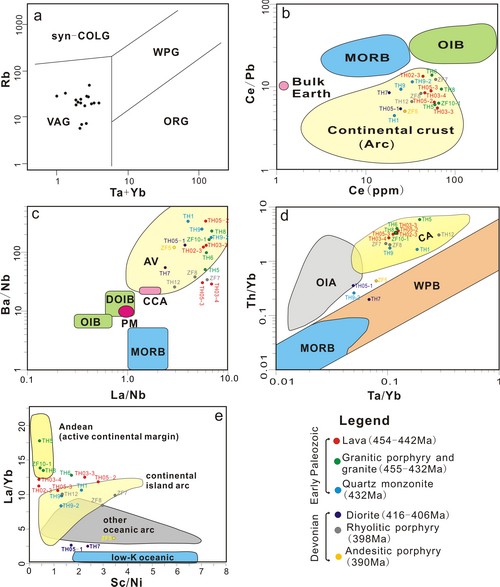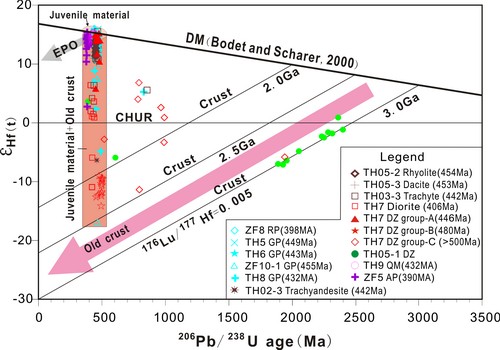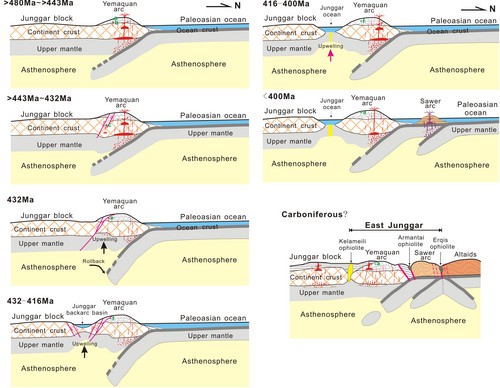Vice Professor XU Xingwang and his cooperators report detailed petrology, mineral chemistry, whole rock and Sr-Nd isotope geochemistry, hornblende 40Ar/39Ar dating, in situ zircon U-Pb dating and Hf isotope analyses from igneous and meta-igneous rocks from the Taheir tectonic window.
Their new results show that the Taheir tectonic window consists of metamorphic and deformed Ordovician volcanic rocks and granitic porphyries, Ordovician–Silurian granites and undeformed Silurian–Devonian granitic diorite, diorites and rhyolitic porphyries. The Ordovician volcanic rocks and granitic porphyries and Ordovician–Silurian granites in the Taheir tectonic window exhibit distinct features of Andean-type continental arc, such as enrichment in Pb, K and U, depletion in Nb, P and Ti, negative Eu anomalies, high La/Yb, Th/Yb and Ta/Yb values, a high proportion of dacite, rhyolite and andesite of the calc-alkaline series, massive contemporary granitic intrusions, mixtures of the juvenile material and >2.5 Ga crust, and extensive crystallization differentiation.
On the basis of the new evidence, the tectonic regime of the East Junggar terrane is redefined and a new model is proposed. It is suggested that the East Junggar terrane is related to the southward subduction of the Paleo-Asian ocean plate beneath the Junggar continent in the early Paleozoic and later shift to intra-oceanic subduction.

Fig. 1. Major and trace element data from the analyzed samples of the Taheir area. (Image by XU)

Fig. 2. Diagram of εHf (t) versus U–Pb age for zircons from igneous rocks from the Taheir area. (Image by XU)

Fig. 3. Tectonic evolution model for the East Junggar. (Image by XU)
Xu et al. Tectonic evolution of the East Junggar terrane: Evidence from the Taheir tectonic window, Xinjiang, China. Gondwana Research. 2012, doi: 10.1016/j.gr.2012.11.007 (Download Here)